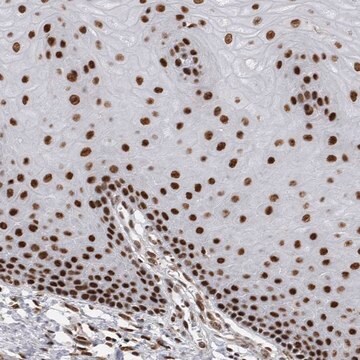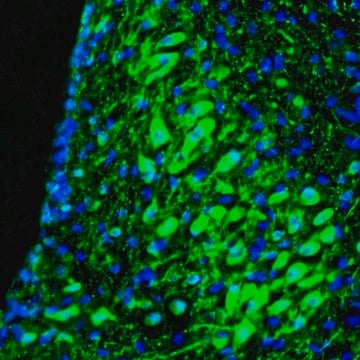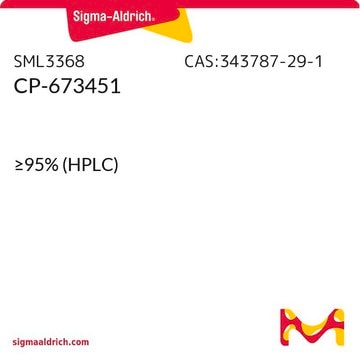5.31085
Eya2 Phosphatase Inhibitor, MLS000544460
Synonym(s):
Eya2 Phosphatase Inhibitor, MLS000544460, 3-Fluoro-N-(( E)-(5-pyridin-2-ylsulfanylfuran-2-yl)methylideneamino)benzamide, ( E)-3-Fluoro-Nʹ-((5-(pyridin-2-ylthio)furan-2-yl)methylene)benzohydrazide, Eab1 Inhibitor, Eyes Absent Homolog 2 Inhibitor
About This Item
Recommended Products
Assay
≥97% (HPLC)
Quality Level
form
solid
potency
2.0 μM Ki
manufacturer/tradename
Calbiochem®
storage condition
OK to freeze
protect from light
color
beige
solubility
DMSO: 100 mg/mL
storage temp.
2-8°C
General description
Biochem/physiol Actions
Eya2 C-terminal Eya domain (ED) protein tyrosine phosphatase
Packaging
Warning
Reconstitution
Other Notes
Krueger, A.B., et al. 2013. J. Biomol. Screen.18, 85.
Legal Information
Storage Class Code
11 - Combustible Solids
WGK
WGK 3
Flash Point(F)
Not applicable
Flash Point(C)
Not applicable
Certificates of Analysis (COA)
Search for Certificates of Analysis (COA) by entering the products Lot/Batch Number. Lot and Batch Numbers can be found on a product’s label following the words ‘Lot’ or ‘Batch’.
Already Own This Product?
Find documentation for the products that you have recently purchased in the Document Library.
Our team of scientists has experience in all areas of research including Life Science, Material Science, Chemical Synthesis, Chromatography, Analytical and many others.
Contact Technical Service








